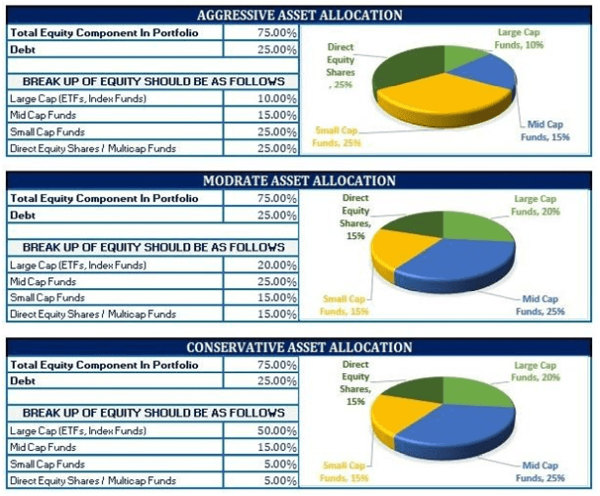Rahul, a 65-year-old recently retired engineer, sat in his living room, sipping coffee and watching television. He had a smile on his face. He eyes were on the stock market ticker on the TV screen and he was intently listening to the commentators discuss stocks. He recalled how he had first started investing in equity when he was 25 years old (40 years ago). He had started out with investing Rs. 10,000 each month and increased his investment by 10% each year. He never missed a single month and eventually, over the period of 40 years, his investments had grown to a whopping Rs. 20.8 crores. He had stayed invested through market ups and downs knowing that equity investing would help him build serious wealth only if he stayed invested for the long term. Rahul made good use of the power of compounding by ensuring that all his dividends were reinvested to further grow his wealth. Power of compounding implies earning interest on interest, i.e. by retaining your investment earnings and not spending it, these earnings further grow. In case of equity investing, reinvesting dividends paid out by companies is the way to use compounding to your benefit. Today, at the threshold of retirement, Rahul was glad and happy about his decision to invest in equity. Not only was he financially independent, he had sufficient wealth to leave behind for his loved ones.
Should you do the same as Rahul? Let's find out.

There are broadly two financial asset classes available for investing - equity and debt. You have the option of investing in equity directly (buying stocks of companies on the stock exchange through your stock broker) or through mutual funds (investing in various equity-oriented funds offered by mutual funds). In case of debt, you have numerous options - fixed deposits, post office schemes, government bonds, corporate bonds and debt funds (offered by mutual funds). Both these asset classes differ in terms of return potential, risk and liquidity.
|
Parameters |
Risk |
Return |
Liquidity |
|
Equity |
Medium-high |
Medium-high |
High |
|
Debt |
Low-medium |
Low |
Medium-high |
Where investing for retirement is concerned, if you are young, investing regularly in equity and, more importantly, increasing your investments periodically and staying invested, will help you achieve sufficient wealth for a comfortable and fruitful retirement where you have funds not only for your sustenance but also to pursue hobbies of your choice. Besides, the cost of living is increasing with every passing year due to inflation. This means, to maintain your standard of living during retirement, you will need to spend much more. Let's understand this with an example. Let's say your monthly household expenditure is Rs. 50,000 (i.e. Rs. 6 lakh per annum). Assuming you are 30 years old today and plan to retire at the age of 60 (30 years later), considering an inflation rate of 6%, your monthly household expenses will inflate to about Rs. 34.5 lakh per annum (Rs. 2.87 lakh per month). Investing in equity will help you earn returns that will exceed the rate of inflation. In other words, you will be able to comfortably bear the rise in cost of living.
You may wonder how much you should invest in equity; you could follow a simple rule of thumb, which is
|
Asset Allocation For Retirement Goal |
||
|
Age (Years) |
Allocation (%) |
|
|
Equity |
Debt |
|
|
25 |
75 |
25 |
|
30 |
70 |
30 |
|
35 |
65 |
35 |
|
40 |
60 |
40 |
|
45 |
55 |
45 |
|
50 |
50 |
50 |
- 100 minus your age is the percentage of your portfolio that should be allocated towards equity investment. For instance, if you are 25 years old, you should invest about 75% of your portfolio in equity (100 minus 25). With every passing 5th year, you must reduce your equity exposure with increase in age. That way, as you near retirement, you would have achieved your required corpus while, at the same time, reducing the risk inherent in your portfolio.
One must understand that all equity shares are not the same. You can broadly divide stocks of companies in three categories based on market capitalization - large caps, midcaps and small caps. Market capitalization of a company is computed by multiplying the number of shares outstanding by its market price per share. For example, if a company has issued 1 lakh shares and the current market price of the company's share is Rs. 100, its market capitalization is Rs. 1 crore (1 lakh x 100). As per categorization by SEBI, the 1st to100th company in terms of full market capitalization are termed as large cap stocks; the 101st to 250th company in terms of full market capitalization are termed as midcap stocks and the 251st company onwards in terms of full market capitalization are termed as small cap stocks.
The risk and return profile of large caps, midcaps and small caps differ. While large caps are less volatile, over the long term, they tend to deliver lower returns than quality midcaps and small caps.
To achieve your target kitty for a comfortable retirement, investing a substantial percentage of your portfolio in equity is important. However, as mentioned above, all equity is not the same. You could tweak your allocation across large caps, mid caps and small caps depending on your risk-taking tolerance. It's advisable to invest about 25% in stocks or multi-cap funds and the balance could be invested in equity funds (large cap funds or index funds or ETFs, midcap funds and small cap funds).
Here is an indicative asset allocation strategy for investors across three different risk categories:

Note: These are indicative percentages for investors in the age bracket of 25 years.
Investing in equity is lucrative provided you make your investments with sufficient research and knowledge. For investors who don't have the time, inclination or knowledge of investing, it would be advisable to consult with a certified financial planner to arrive at your asset allocation and build your investment portfolio.
Summary
- For young people, investing regularly in equity, increasing your investments periodically and staying invested will help you achieve sufficient wealth for a comfortable and fruitful retirement.
- Investing in equity will help you earn returns that will exceed the rate of inflation thereby maintaining your living standards.
- Follow a simple rule of thumb - 100 minus your age, which is the percentage of your portfolio that should be allocated towards equity investment.
- One must understand that all equity shares are not the same. You can broadly divide stocks of companies in three categories based on market capitalization - large caps, midcaps and small caps.
- You could tweak your equity portfolio allocation across large caps, midcaps, small caps, and direct equity shares depending on your risk-taking tolerance.
- It's advisable to invest about 25% in stocks or multi-cap funds and the balance could be invested in equity funds.
- Consult with a certified financial planner to arrive at your asset allocation and build your investment portfolio.








 CAclubindia
CAclubindia

